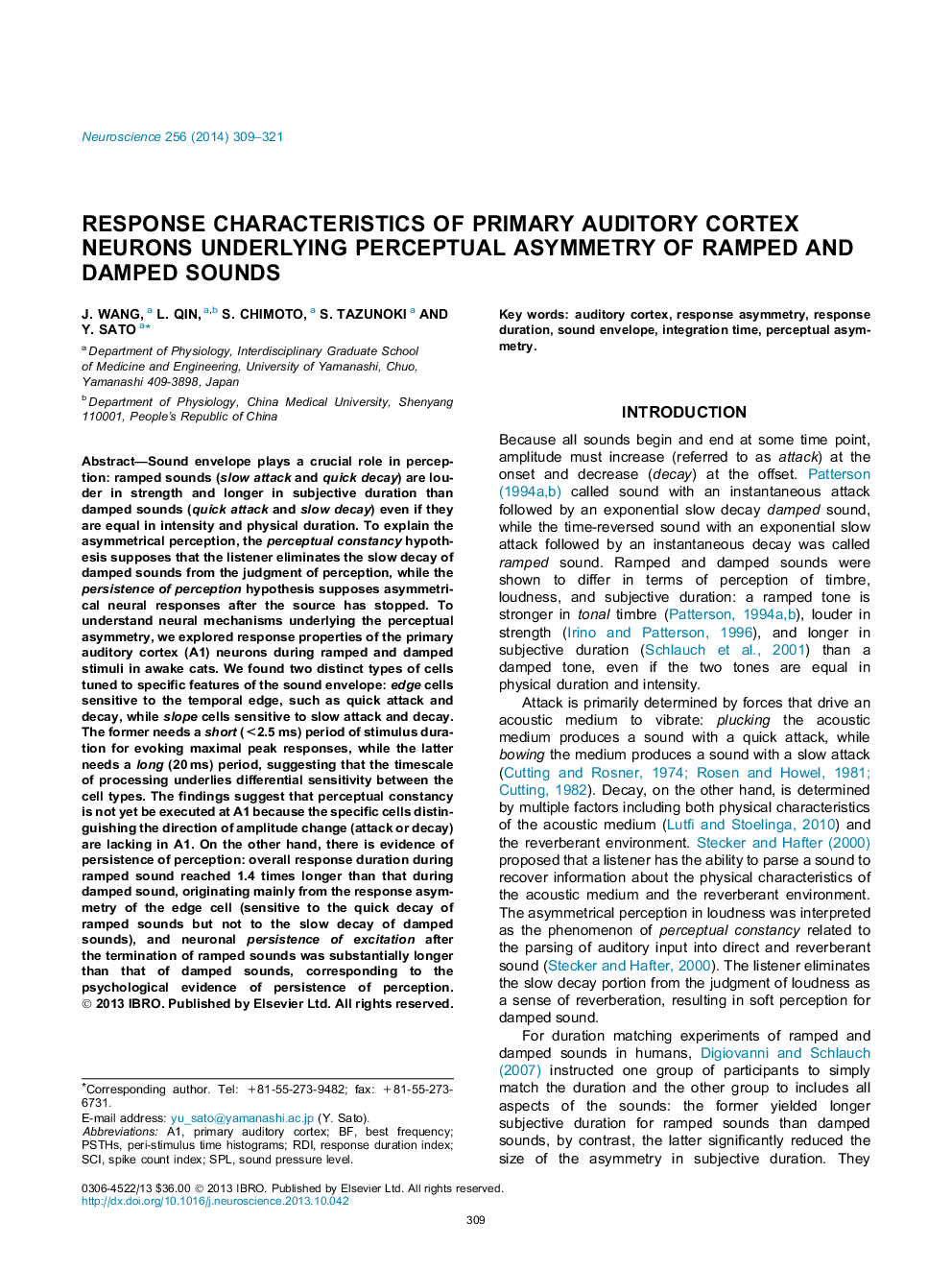| کد مقاله | کد نشریه | سال انتشار | مقاله انگلیسی | نسخه تمام متن |
|---|---|---|---|---|
| 6274146 | 1614820 | 2014 | 13 صفحه PDF | دانلود رایگان |
- Humans hear ramped (slow attack and quick decay) sounds louder and longer than damped (quick attack and slow decay) sounds.
- We found edge cells sensitive to the quick attack and decay and slope cells sensitive to the slow attack and decay in A1.
- Integration time for evoking full responses is short for edge cells and long for slope cells, underlying the sensitivity.
- Persistence of excitation after ramped sounds was longer than that after damped sounds caused mainly from the edge cell.
- This supports psychological reports that persistence of perception is longer after ramped sounds than damped sounds.
Sound envelope plays a crucial role in perception: ramped sounds (slow attack and quick decay) are louder in strength and longer in subjective duration than damped sounds (quick attack and slow decay) even if they are equal in intensity and physical duration. To explain the asymmetrical perception, the perceptual constancy hypothesis supposes that the listener eliminates the slow decay of damped sounds from the judgment of perception, while the persistence of perception hypothesis supposes asymmetrical neural responses after the source has stopped. To understand neural mechanisms underlying the perceptual asymmetry, we explored response properties of the primary auditory cortex (A1) neurons during ramped and damped stimuli in awake cats. We found two distinct types of cells tuned to specific features of the sound envelope: edge cells sensitive to the temporal edge, such as quick attack and decay, while slope cells sensitive to slow attack and decay. The former needs a short (<2.5Â ms) period of stimulus duration for evoking maximal peak responses, while the latter needs a long (20Â ms) period, suggesting that the timescale of processing underlies differential sensitivity between the cell types. The findings suggest that perceptual constancy is not yet be executed at A1 because the specific cells distinguishing the direction of amplitude change (attack or decay) are lacking in A1. On the other hand, there is evidence of persistence of perception: overall response duration during ramped sound reached 1.4 times longer than that during damped sound, originating mainly from the response asymmetry of the edge cell (sensitive to the quick decay of ramped sounds but not to the slow decay of damped sounds), and neuronal persistence of excitation after the termination of ramped sounds was substantially longer than that of damped sounds, corresponding to the psychological evidence of persistence of perception.
Journal: Neuroscience - Volume 256, 3 January 2014, Pages 309-321
